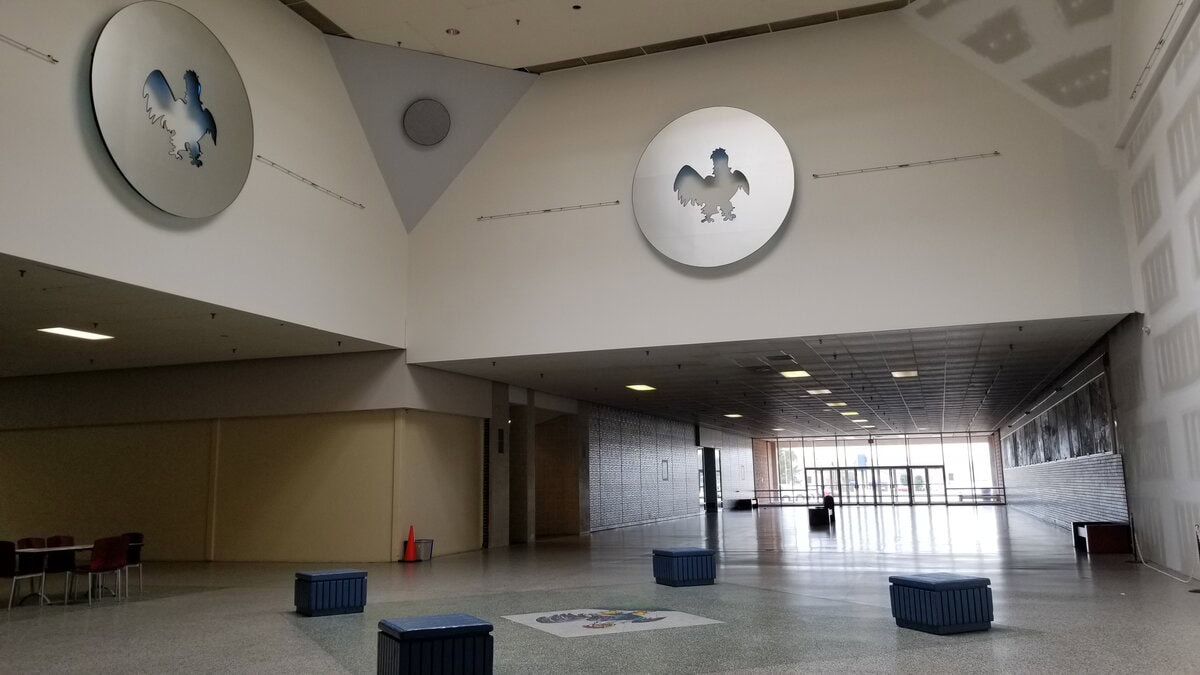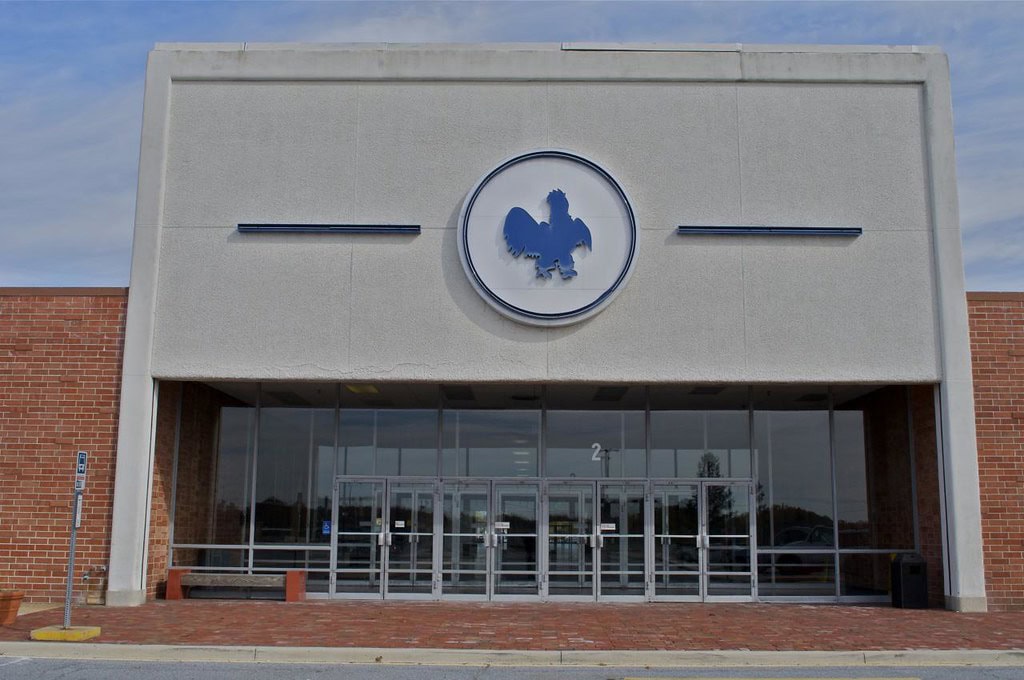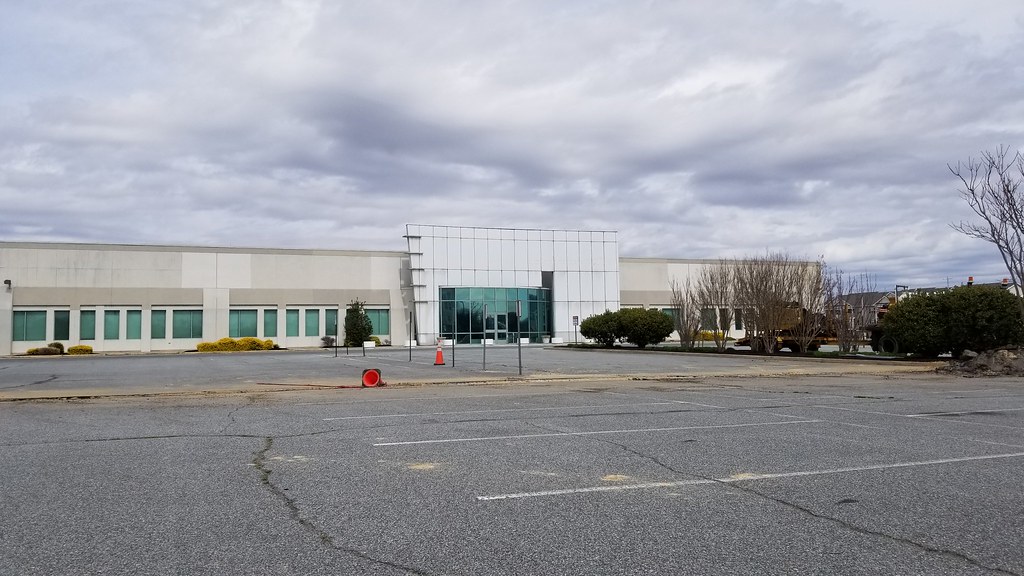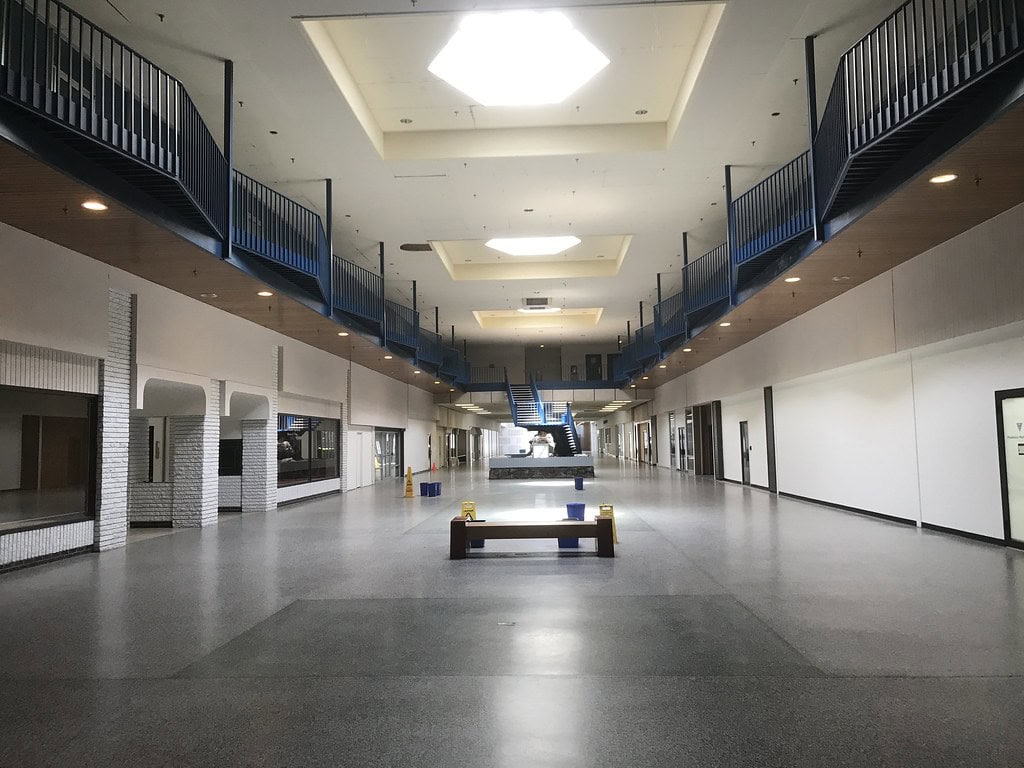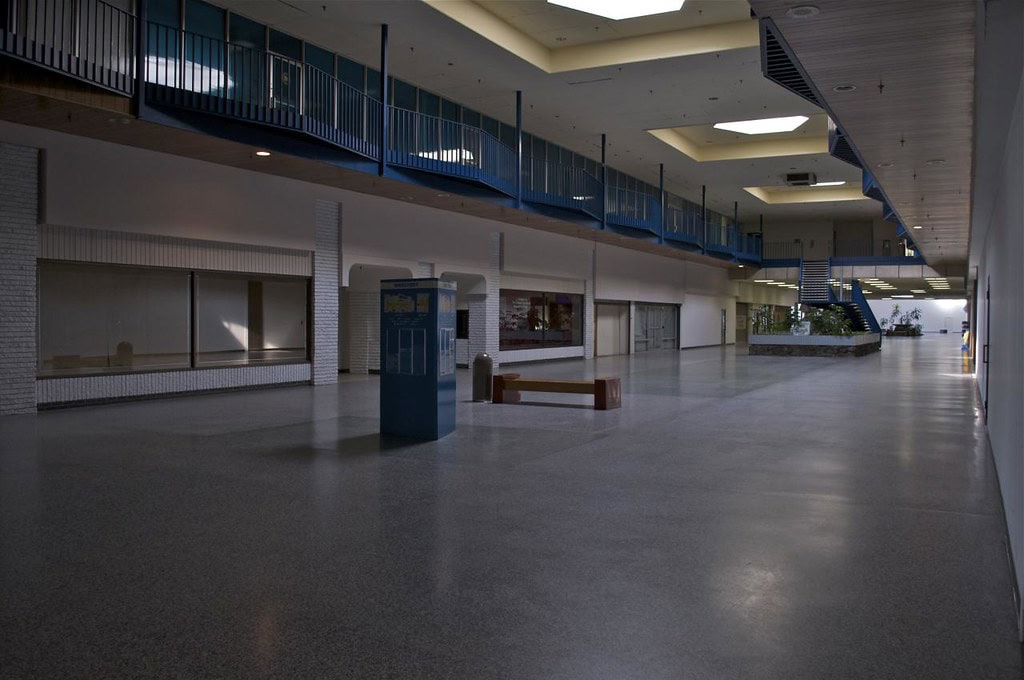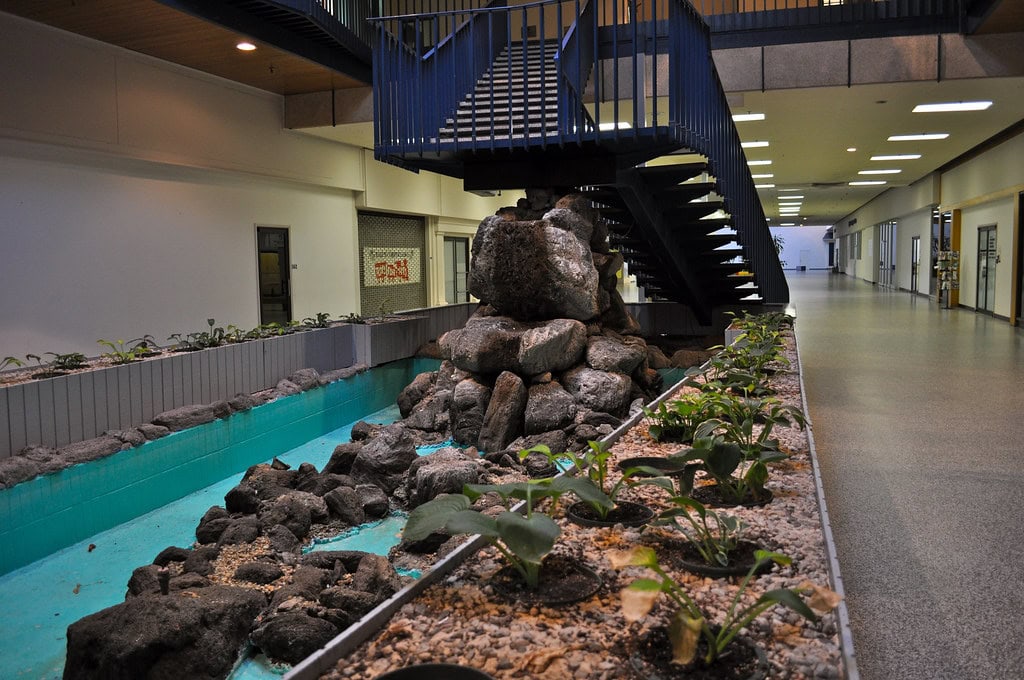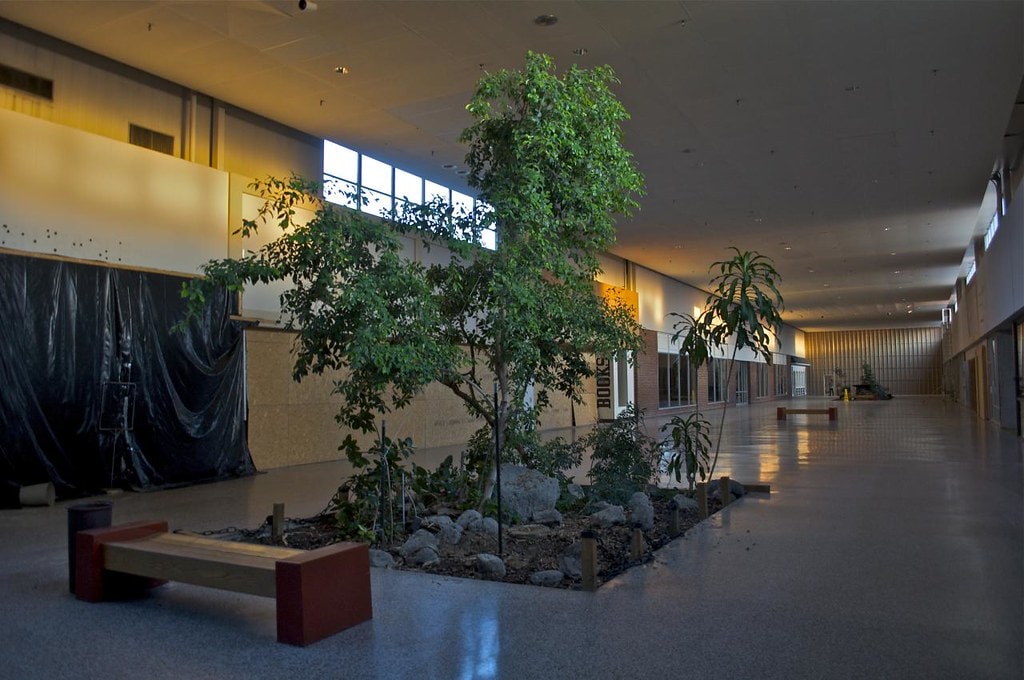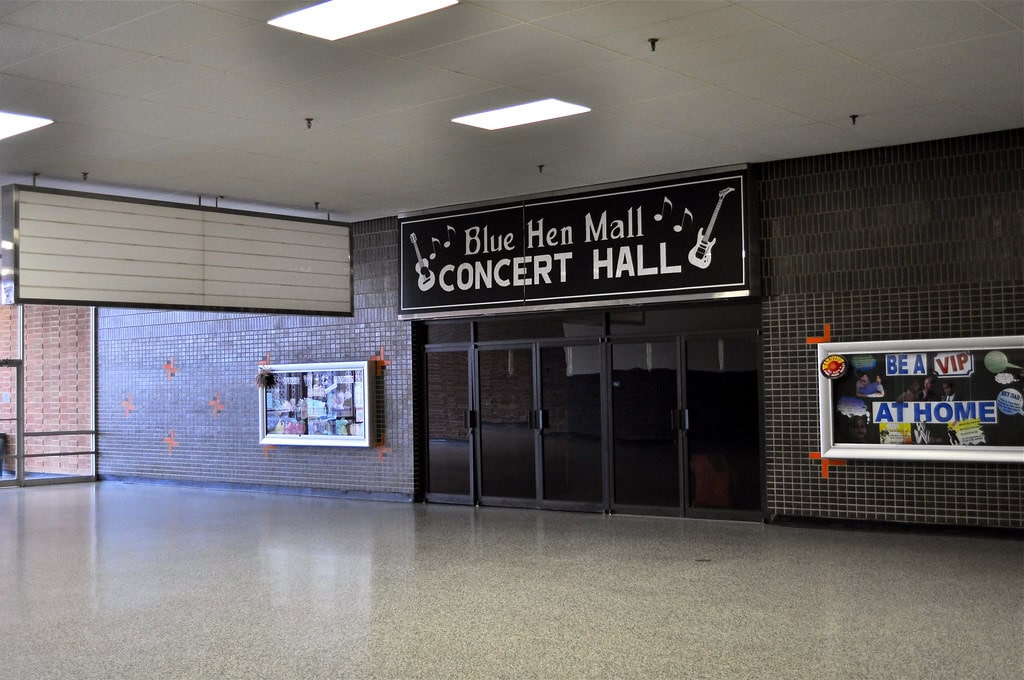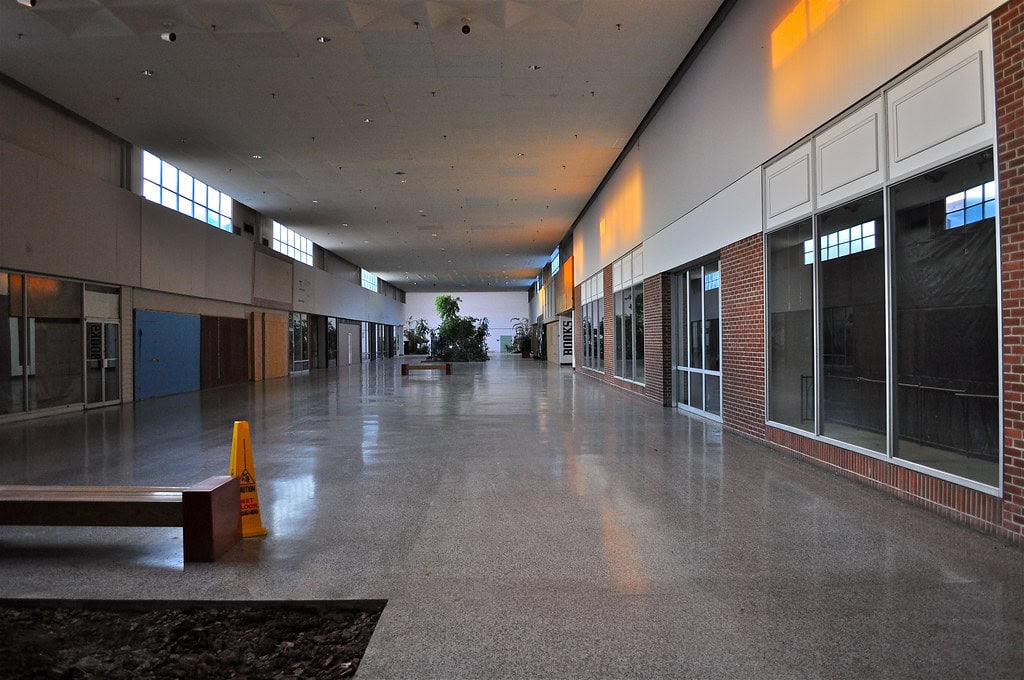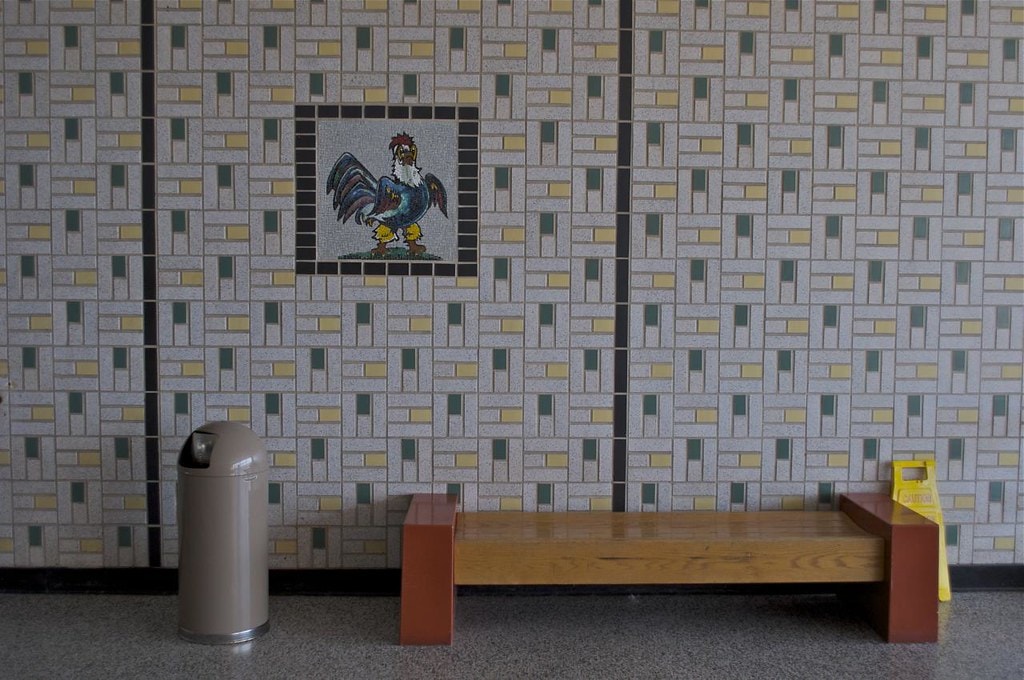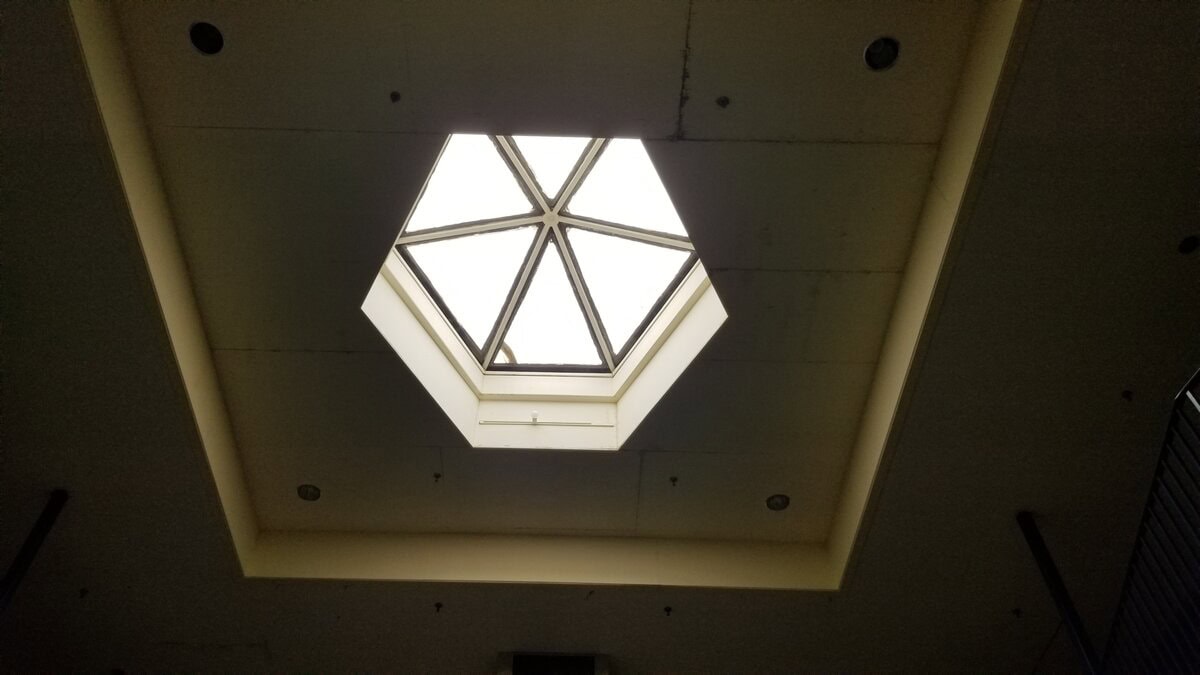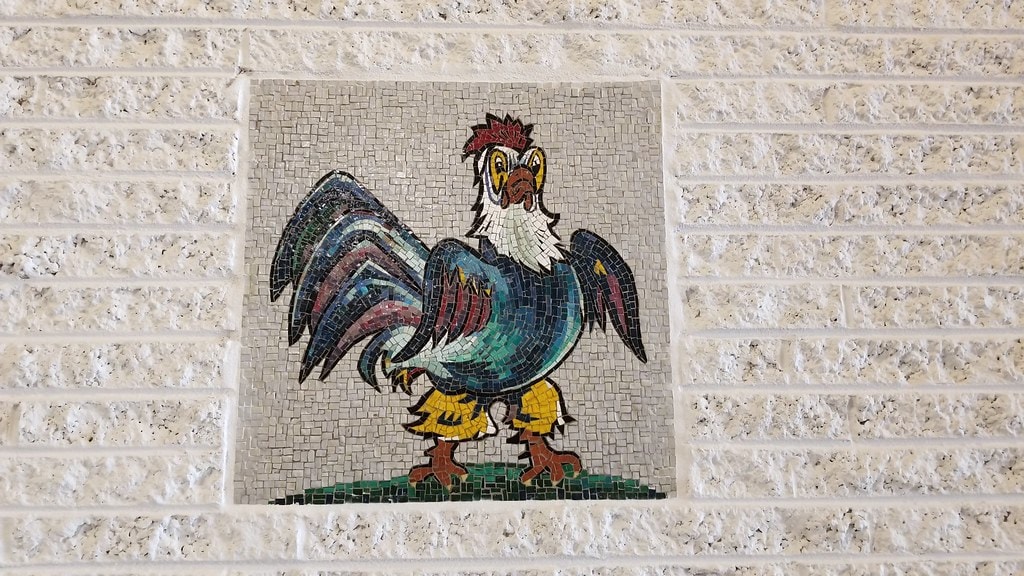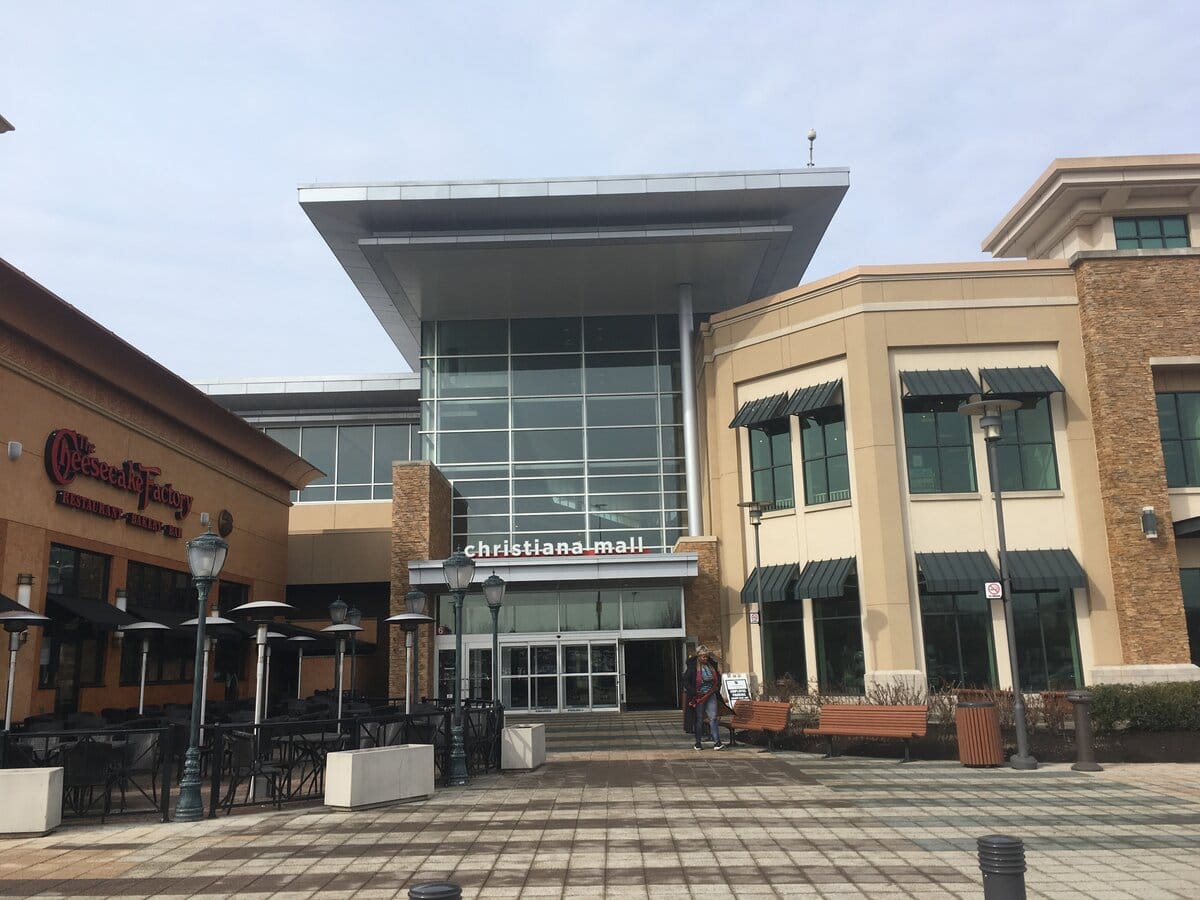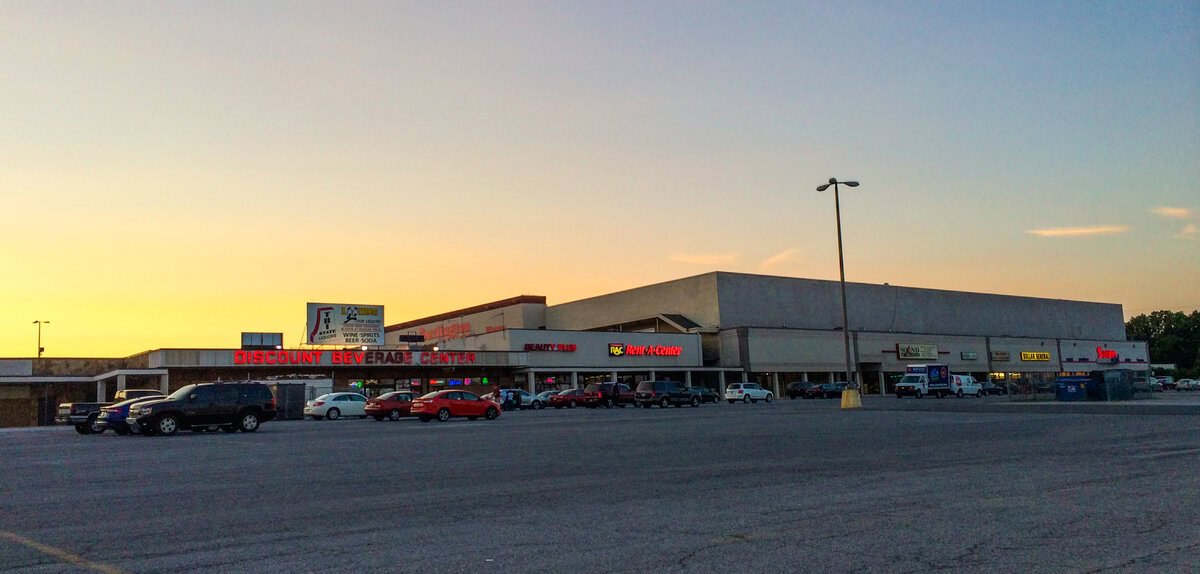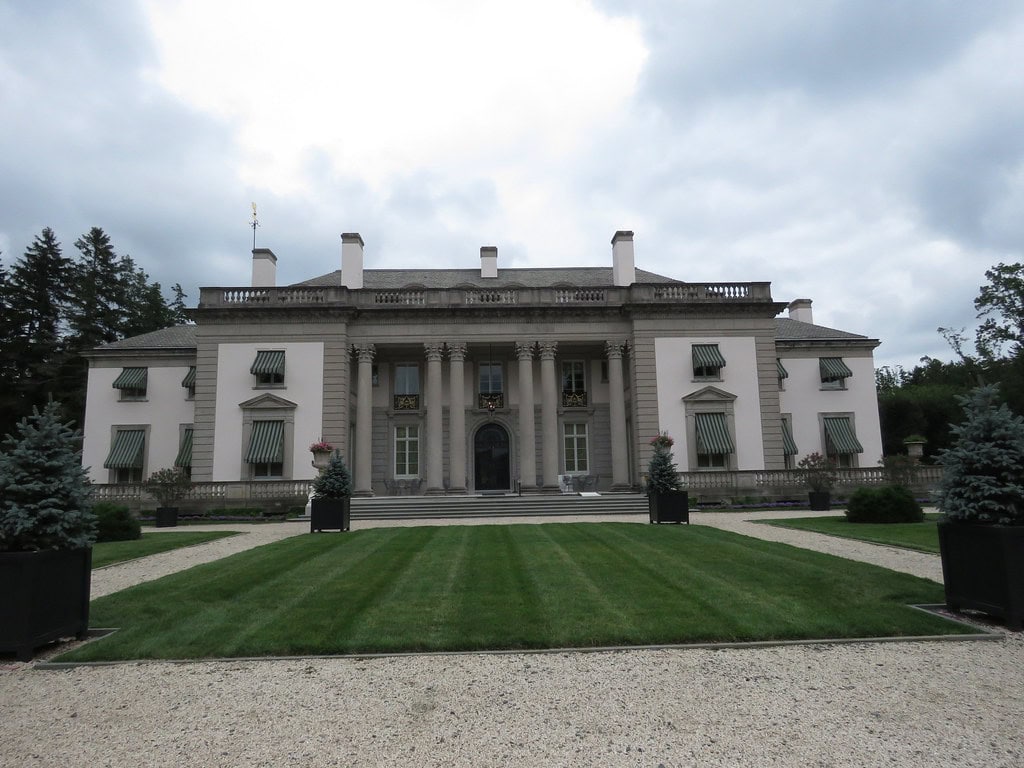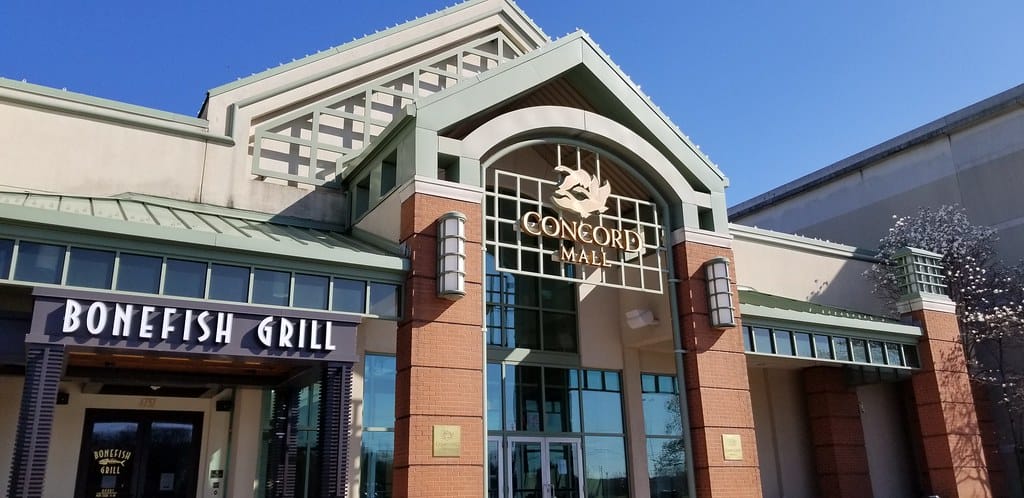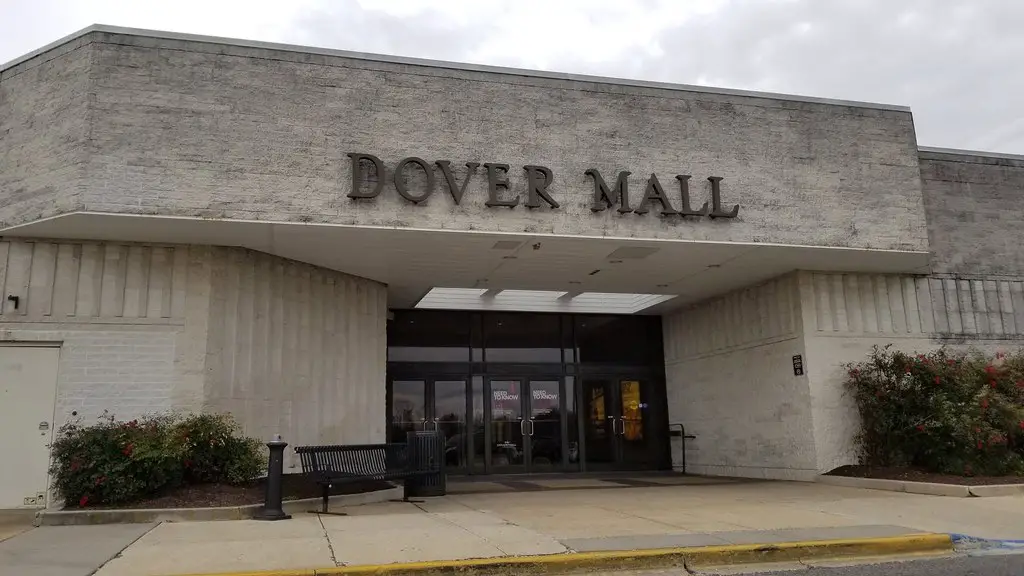A Mall You Could Hear Before You Saw
Walk through the parking lot at 655 S. Bay Road and picture 6,000 empty spaces stretching under the sun.
In August 1968, the mall's stalls quickly filled with families going to Woolco, teenagers entering the Dover Cinema, and other visitors walking on the tile floors to Thrift Drug or the Torch House restaurant.
Blue Hen Mall attracted crowds without needing much showiness.
There was a blue hen clock that chimed hourly, fountains under the stairs, and a big movie screen showing Gone with the Wind on opening night.
Delaware's first enclosed mall soon pulled shoppers from downtown. The mural added in 1976 in the entrance hall signaled that it was open to all.
Breaking Ground and Making History (1966-1968)
Construction began in September 1966 on farmland along Bay Road, when most people in Dover still did their shopping downtown on foot.
The developer, Jardel Company, had a $5 million plan to build Delaware's first enclosed shopping mall.
By August 1968, the building opened with three main stores: JCPenney, Woolco, and Woolworth.
These stores attracted most of the early customers to the mall.
As foot traffic picked up inside the mall, retailers along Loockerman Street began to see fewer customers.JCPenney had moved off that street to take the new mall lease.
Other merchants stayed, but the shift had already started. The pull came from inside, and it had air conditioning.
Retail Flow and Architectural Pull (1969-1982)
Once people came inside, they usually moved along a path set up to guide their movement.
Blue Hen Mall used a basic dumbbell layout, placing JCPenney at one end, Woolco at the opposite, and both the movie theater and Woolworth in the center.
Stores filled in soon after opening. There was Thom McAn, Benjamins, and Hess Apparel.
Restaurants gathered near the cinema: Bavarian Pretzel, Russell Stover Candies, and a sit-down place called The Torch House.
China Garden served American-style Cantonese food in red booths with gold-accented wallpaper.
Fountains and terrazzo floors gave the space a clean look. The mezzanine level had more than just a view.
The mezzanine was used for law offices, dental practices, and a military recruiting office.
A balcony ran around the edge, the restrooms were in the middle, and the waterfall was below.
A four-sided blue hen clock hung over the main area and struck hourly. Its chime stood out among the footsteps and background conversation.
When Dover Cinema opened in March 1969, it introduced stadium seating to a Delaware mall.
The 60-foot screen showed "Gone with the Wind" at the opening.
That same month, the Record Museum opened, later renamed Sound Odyssey, and moved in near Woolworth.
Market Split and Retail Shifts (1982-1994)
When Dover Mall opened in 1982, four miles away, Sears started at its new location.
Sears had previously tried to reach an agreement for space at Blue Hen Mall but was unable to come to terms with Jardel Co. That decision affected the next ten years.
Woolco closed in early 1983, and Roses moved into the space later that year.
Around the same time, two six-screen multiplex theaters opened nearby, pulling customers from Dover Cinema, which was already struggling.
The single-screen theater closed around 1985. In 1987, Blue Hen Mall tried to update itself.
A $400,000 renovation added neon signs and new features to the center court.
The clock was taken down on August 27 that year, and the fountains were used less.
By then, national chains were not as common.
Even so, stores like Radio Shack and GNC remained into the 1990s, along with local businesses such as Sheila's Craft and Party World and First State Coin.
JCPenney left in August 1993, moving to Dover Mall. Woolworth closed after the 1993 holidays. Roses shut down by March 19, 1994.
As each store left, the hallway became quieter, where there had once been music from the shops.
Live Acts and Empty Seats (1987-1998)
By fall 1987, the old theater was not showing movies anymore.
Earle Teat, a local musician and business owner, signed a lease and renamed it the Blue Hen Mall Concert Hall.
He spent $30,000 on lighting and sound equipment and began booking country musicians.
Tammy Wynette played that first season, followed by Chubby Checker in 1988, Marty Stuart in 1991, and Johnny Cash with June Carter Cash in 1992.
The operation was kept simple. Each performer typically did two shows a night, 7 pm and 10 pm, with 748 seats sold for each if the house filled.
The theater kept its wide screen, but most people focused on the risers and speakers used by touring crews.
Between shows, Teat worked at his music store down the hall, passing closed shops and air that no longer smelled like Bavarian pretzels.
Attendance dipped more than once.
The old cinema's indoor ticket booth and family room did not help bring in people when the music couldn't draw a crowd.
Some weeks, the hall was empty. Others, only a few rows were filled.
By the late 1990s, the last performer finished and the venue closed. The sign above the door was never changed again.
Government Services Take Over the Lease (1995-2025)
By 1995, after the anchor stores had exited and retail collapsed, the owners of Blue Hen Mall began leasing space to state and federal agencies.
Inside what had once been corridors of chain stores, the State of Delaware set up major offices for its social services.
The Division of Social Services took offices for food stamps, child care support, Medicaid enrollment, and TANF programs.
The Women, Infants, and Children (WIC) program, run through the Division of Public Health, established its own clinic in Suite 1C.
The Department of Labor brought in multiple divisions, Unemployment Insurance, Vocational Rehabilitation, and Employment & Training, based out of Suite 2H.
All of these offices were open all year, and the setup used the mall's original structure: long rectangular suites with entrances made from old storefronts.
On the federal side, the U.S. Social Security Administration moved in, offering public access to benefit processing and account services.
Then, in March 2021, the Department of Veterans Affairs opened the Kent County VA Clinic in Suite 3C.
That outpatient clinic offered primary care, lab work, women's health, support for addiction, and PTSD treatment.
Lease Conversions and Office Buildouts
In early 1995, the old mall signs added two new words: "Corporate Center." JCPenney's space became an office for 300 Aetna employees.
Roses, once a department store, turned into a call center for NationsBank, which later became part of Bank of America.
These were not temporary fixes. The spaces were gutted and rebuilt for long-term tenants.
Fluorescent lights took the place of the old fountain lights, and carpet was installed where terrazzo floors had been.
Retail did not end all at once. Radio Shack stayed open. So did a few independents.
The owners said their goal was to balance stores for people working in the building with services that could still bring in people from nearby.
This approach lasted for some time. In 2006, Blue Hen Properties sold the property to Pettinaro Enterprises for $17.4 million.
Pettinaro promised $10 million in upgrades and delivered on those plans.
They put in new windows, fixed the stucco, planted landscaping, and created separate entrances for the office areas.
Bank of America closed its call center later that year. Aetna left in 2009.
The public could still use the interior walkways until 2020, when pandemic shutdowns led management to close them.
After that, only tenants and staff were allowed in.
The mall was no longer open as a pass-through, but you could still see the marks on the floor where the stores used to be.
Medical Redevelopment and Property Reuse (2013-2025)
In September 2013, Bayhealth Medical Center signed a lease for the old JCPenney wing.
What used to be a department store, then a corporate office, was stripped out and rebuilt.
The finished space was used for administrative offices, IT services, and a sports medicine unit.
It was a full interior overhaul, but the exterior still hinted at what used to be there.
In January 2022, Bayhealth purchased both original endcaps of the building, JCPenney on one side, Woolco/Roses on the other.
That deal, which cost $17 million, started a new phase for the property. Work on the Woolco wing moved fast.
Crews updated the facade, cleared out the interior, and built medical suites for outpatient use.
The final phase of Bayhealth at Blue Hen opened in October 2024, adding offices for pulmonology, endocrinology, occupational health, lab work, ECG testing, walk-in care, and therapy.
The former entrances now lead to waiting rooms. There are patient chairs where displays once were.
Some of the walls display framed health posters. Others still hold the angles of retail glass.
From the outside, the change appears finished.
Inside, the floors are smooth and quiet, and if you stop and listen, you can hear the HVAC system where music used to play.
🌻

